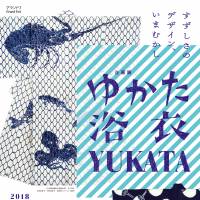July 14-Sept. 3
Despite the decreasing number of Japanese wearing traditional clothing on a regular basis, the yukata (lightweight kimono) is still a popular garment for summer festival wear, especially among younger generations.
The yukata was originally a casual garment to be worn after taking a bath, with "yu" meaning "hot bath" and "kata" being derived from "katabira" hemp underclothing. During the Edo Period (1603-1868), as the use of public baths rose and cotton — an easy-to-dye textile — became more accessible, the yukata became a more decorative and everyday item of clothing.
While traditional techniques, such as stencil and tie dyeing, are still practiced in yukata production today, contemporary designers have introduced innovations in style and fabrics that have kept the garment fashionable.
This exhibition focuses on Edo Period to early Showa Era (1926-89) yukata, shedding light on the history and evolution of textiles, patterns and style. Also on show are ukiyo-e woodblock prints and uchiwa-e (fan paintings) from the same period, all depicting people wearing yukata.
Iwami Art Museum; 5-15 Ariake-cho, Masuda, Shimane. Masuda Stn. 10 a.m.-6:30 p.m. ¥1,000. Closed Tue. 0856-31-1860; www.grandtoit.jp/museum


















With your current subscription plan you can comment on stories. However, before writing your first comment, please create a display name in the Profile section of your subscriber account page.